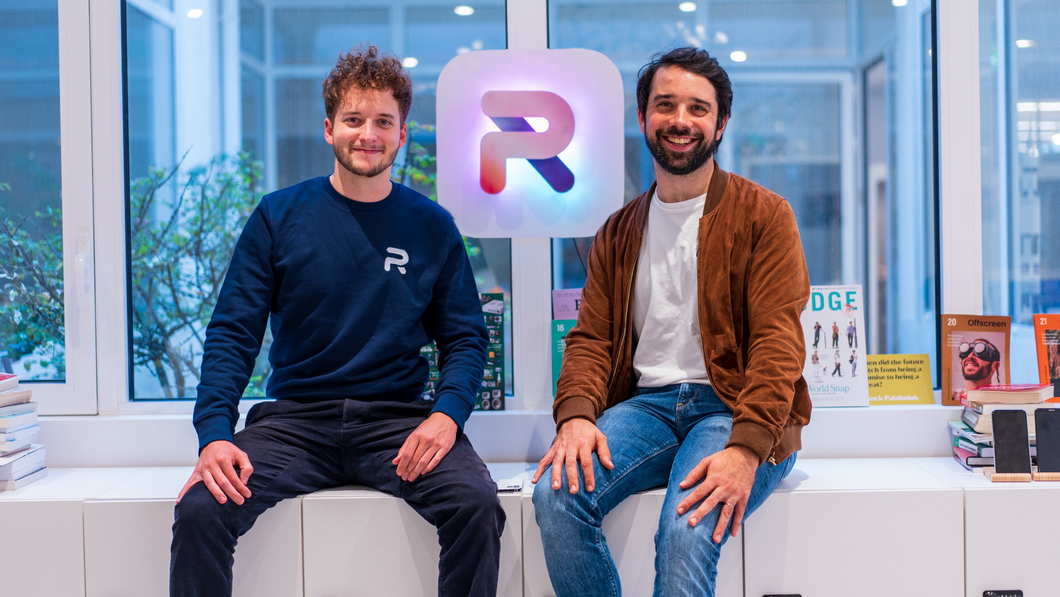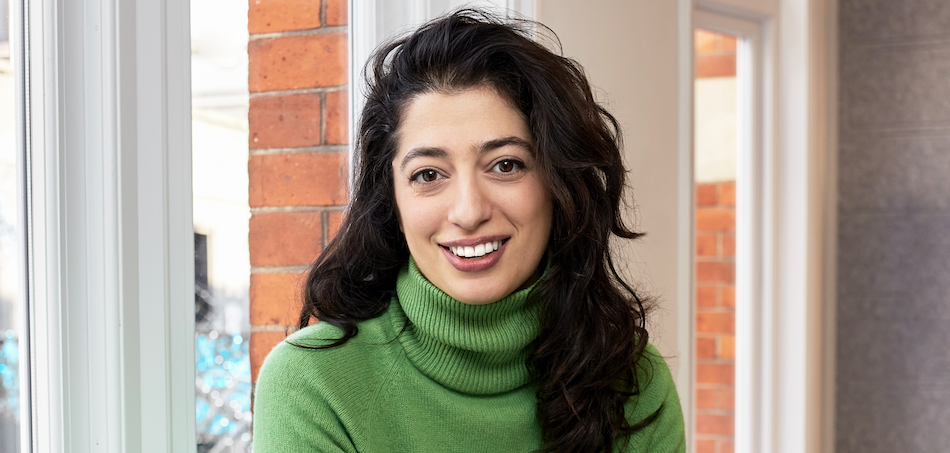Amid the global frenzy surrounding GenAI, Paris-based PhotoRoom has become one of the hottest apps in tech’s hottest market.
After quietly building momentum for a couple of years, PhotoRoom was shoved into the spotlight this fall when influential VC firm Andreessen Horowitz published a report citing it as the world’s sixth-most popular GenAI service, near the top of a leaderboard with OpenAI’s ChatGPT and Google’s Bard. High-profile partnerships with Taylor Swift for her most recent album and the summer’s Barbie movie also cemented its reputation as a breakout GenAI star.
It’s developed a powerful tool that can remove and replace photo backgrounds in a blink — and subscriptions to use it are generating €50m in annual recurring revenue less than three years after launch.
Despite this fast start, the company faces a flood of competition from new AI-powered photo-editing apps. And like so many GenAI startups, PhotoRoom’s growth faces potential challenges based on the costs and availability of the computing power it needs.
But even as cofounder and CEO Matthieu Rouif races to keep PhotoRoom one step ahead and avoid the pitfalls of massively scaling, he’s amazed by how GenAI has rewritten the rules — and turbocharged the growth of his company — in a way even he couldn’t have predicted a year ago.
“The amplitude of the impact and the adoption is just so impressive,” Rouif says, in an interview with Sifted. “We understood that, okay, this is going to be big for us and for photography. But we didn't realise it was going to be the biggest trend for software overall, and really, the entire world.”
“Crazy” growth
In September Andreessen Horowitz published a report called “How Are Consumers Using Generative AI?”, which ranked PhotoRoom at number 6, two slots higher than even Hugging Face, an AI startup by French founders based in New York that raised $235m this past summer.
Rouif has said elsewhere that, after the report, his “inbox exploded with messages from investors”. Speaking to Sifted in late October, he declined to comment on rumours that the company is currently raising another round of funding, noting that the company is profitable. “We have what we need,” he said.
If PhotoRoom is being aggressively courted by investors it would be no surprise given the current mania surrounding GenAI startups. French startup Mistral AI raised a €105m seed round based on a white paper and is reportedly trying to raise another $300m.
Unlike many such GenAI startups, however, PhotoRoom actually has a commercial product that’s clearly struck a chord.
According to Apptopia, PhotoRoom had 8.49m worldwide downloads in October, up from 3.42m in January, a 150% increase. Its monthly active users climbed to 12.89m in October from 3.13m in January, the company reports, for 310% growth.
“It's crazy,” says Sketchfab founder Alban Denoyel, who invested as part of a €19m round that PhotoRoom raised in November 2022. “I've invested in about 25 companies and this is the most impressive growth I’ve seen. And there is still a lot of room for growth. I’m very bullish about their revenue.”
Photo editing for everyone
When PhotoRoom launched, Rouif focused on mobile photo-editing, picking a market that was ripe for disruption by emerging AI tools.
“Mobile software is 10 times bigger than anything you’ll do on desktop,” he says. “And the first software you’ll use in your life is photo editing.”
PhotoRoom wants to give any small business owner the ability to produce studio quality photos for their products — and compete with a global retail giant with endless marketing resources.
“People know how to take good selfies, but good product photos are tougher,” he says.
There’s a free tier, while a subscription that allows for editing more photos at higher quality costs €12 per month or €80 annually. According to Sensor Tower, users have spent more than $60m on subscriptions to PhotoRoom since the app launched in 2020, with about 40% of that coming from the US market.
Debra Aho Williamson, a veteran social media analyst, says PhotoRoom seems to have struck a chord with users because the app has made the experience simple in a way that makes the economic value clear to users.
“One of the biggest pain points for an ecommerce company is developing multiple versions of the ad to deliver to different target audiences and then measuring and tracking the performance of those ads,” she says. “PhotoRoom seems to be able to make the process of changing the background seamless. And that means you can test lots of different ways of showing your products.”
Such changes might seem trivial, but Rouif says small sellers can often see big boosts in sales depending on how they display images of products.
“We really care deeply about how we can make their life easier,” he says. “Tell us what is your story about your product and with AI we can make that unique but we also use AI to advise you on what the best image is for which platform.”
Image revolutions

Rouif’s search for customer feedback has been relentless. Early on, he and his cofounder Eliot Andres, a machine learning and computer vision engineer, would spend all day in the McDonald’s next to their office recruiting customers to test new versions of the app in exchange for paying for their meals.
“It was the best learning experience,” he says. “But we did it so much that we got banned from McDonald’s because the security said we had to stop bothering the customers.”
In February 2020, they released the first version of PhotoRoom, which used AI to remove the background of an object so that it looked more professional for ecommerce listings. The company was accepted into Y Combinator a few weeks later, becoming part of the first remote cohort as a result of Covid.
While Rouif says the Y Combinator experience helped with things like storytelling and scaling, the app was already taking off. By Demo Day in August 2020, the app had become a “rocket ship” with 50% month-over-month growth and $1m in ARR, he says. The following year, Apple named PhotoRoom its “Editor’s Choice” while Google recognised it as Best App of 2021.
By November 2022, the company had reached 40m downloads and announced it had raised a $19m Series A round led by Balderton Capital, and which included money from previous investor Adjacent and business angels from companies such as Hugging Face.
Just as important, the company released its first version to include GenAI capabilities that same month. Dubbed Magic Studios, users could now remove backgrounds and create new ones.

Initially, Magic Studios only provided a small bump in growth. Rouif says users found it too slow as it took several minutes to generate new images. With online sellers potentially needing to reformat large batches of pictures, this was too cumbersome.
So the team rebuilt the app to make it faster, optimising some features and removing others to reduce the image creation time to seconds. And they added prompts that gave users ideas for potential backgrounds.
“We learned that speed matters,” Rouif says. “Especially on the mobile experience, when you're talking to tens, hundreds of millions of users, that matters a lot.”
Since launching this second version earlier this year, PhotoRoom has exploded.
Road ahead

PhotoRoom currently has 50 employees and remains relatively lean, though it did just move into new Paris headquarters. As it hires to keep up with growth, it’s also working to secure the computing infrastructure required to scale its GenAI platform.
“The GenAI algorithms take more GPUs than the background removal we did,” he says.
Rouif says the global GPU shortage hasn’t slowed PhotoRoom because the team continues to make its GenAI as efficient as possible, so it’s less resource-intensive. The company also signed a major partnership agreement with Google Cloud this summer to get access to its coveted NVIDIA graphics processing units.
PhotoRoom has also sought to control its destiny by training its foundational models using its own data. Rouif says it ensures users would avoid any copyright infringement issues, but it also allows them to incorporate feedback faster. That training has allowed it to make the platform more accurate by eliminating so-called “hallucinations”, where the AI misreads and distorts complex images like the pattern on a coffee cup or strands of hair.
“They built all the tech themselves so there is defensibility there,” says investor Denoyel. “There are a gazillion background removal apps but PhotoRoom just has a superior product.”
That robustness has attracted major brands such as Shopify, Netflix and Warner Brothers, which have integrated PhotoRoom’s API directly into their websites to generate product images. Warner Brothers used PhotoRoom this past summer to promote its Barbie movie by allowing consumers to upload photos and make posters of themselves with the movie logo.
Taylor Swift staged a similar promotion in October, integrating PhotoRoom into her website so fans could create a version of her re-recorded 1989 album cover with their own faces in place of Swift’s.
While PhotoRoom is still exploring how to monetise such partnerships, analyst Williamson says it was a savvy way to raise brand awareness while creating a positive vibe around GenAI at a time when many people may have some hesitation about the impact of the technology.
“One of the big underlying concerns about generative AI is that people are intrigued by it, but they're also afraid of it because they're not really sure exactly what it's going to do,” she says. “If you can demonstrate that consumers are interested in this and want to play around with it, then that’s positive for the company.”
For now, Rouif says the company remains focused on expanding the digital imaging capabilities to deliver more features to serve customers. More than the tech, Rouif says this obsessive customer focus is what will keep the company’s momentum going.
“We had luck in terms of timing,” Rouif says. “There was an inflection point in AI and in the tech and the results we could achieve. But we also understood what people wanted because we’ve been working in this area for a very long time. And that’s what made this successful.”


